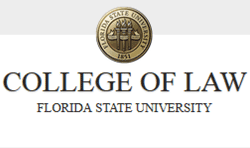Document Type
Article
Publication Date
2023
Publication Title
Ohio State Law Journal
Publication Title (Abbreviation)
Ohio St. L. J.
Volume
84
Issue
3
First Page
603
Abstract
Emergency has assumed central importance in the United States legal system. In 2019, President Trump declared an emergency at the southern border after Congress declined to fund his wall; critics responded with legal challenges and proposed reforms to the statute he invoked, the National Emergencies Act (NEA). Emergency powers have also played a key role during the COVID-19 pandemic. This Article conducts a comprehensive survey of emergency powers in the United States. It shows that the NEA is only one among many grants of authority presidents can call upon in a crisis, alongside other emergency schemes, specially delegated statutory power, nonemergency statutes, and inherent executive authority. It argues that the United States' fragmented emergency powers scheme raises not only well-known risks of overreach presidents abusing emergency authority to gain power or erode democracy, but also less appreciated risks of underreach where presidents are unwilling or unable to deal adequately with a crisis. These risks are not distributed evenly across types of crises, and events like the pandemic, where several of President Biden's major initiatives have been struck down by the Supreme Court, highlight the kind of emergency for which the risk of underreach is most acute. Finally, the Article draws on emergency clauses found around the world to lay out a reform agenda more ambitious than those currently circulating in Congress, which would tackle both overreach and underreach. It would combine broader, more coherent grants of power with productive forms of congressional and judicial control.
Recommended Citation
David Landau,
Rethinking the Federal Emergency Powers Regime, 84
Ohio St. L. J.
603
(2023),
Available at: https://ir.law.fsu.edu/articles/822
